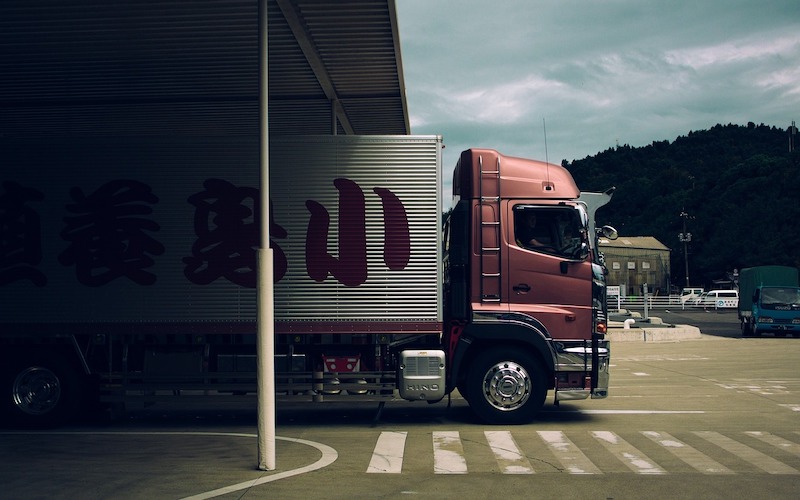In today’s world, cannabis business operations are complex, multifaceted affairs – this notion is heightened with the nuances of transport in the industry. With cannabis products still demanding a large price on the black market, and business operating in a “cash only” industry, cannabis companies have plenty to protect. As such, forward-looking security technology companies are implementing mobile surveillance systems for transporting sensitive assets.
While mobile surveillance systems are not required for the transport of cannabis products according to most state compliance standards, they can still prove quite valuable. This is namely because, if a delivery is compromised, a cannabis company can easily lose its operating license, or simply go out of business. Mobile surveillance can also be used to monitor the behavior of employees working remotely.
Safety Vision is an industry-leading mobile surveillance technology company that is actively engaging the cannabis industry. According to their Marketing Director Jamie Hawkins, “Safety Vision has been leading the mobile surveillance industry for over 25 years. Our revolutionary solutions give fleet administrators the ability to track, view, and monitor their products with ease knowing their inventory and delivery routes are always protected under video surveillance.” Safety Vision’s history in traditional forms of mobile security systems, as well as their impact on the cannabis industry of today, makes them one of the world’s foremost authorities on the issue.
The Use of Mobile Surveillance Systems
Mobile surveillance technology resembles standard camera security systems concerning infrastructure, but also includes innovations such as GPS tracking. The crux of these systems is that remote cameras report real-time imaging back to a data center where video is recorded and monitored. This data is then available for viewing remotely by way of computers and cell phones. GPS tracking systems also give business owners a real-time understanding of where their cargo is located during transport.
Mobile surveillance operations face several challenges not experienced in more standard security protocols. Trials mainly have to do with the fact that this delicate technology must operate in conjunction with the demands of the road. Hawkins explains, “The mobile environment presents particular challenges that stationary systems don’t face. Simply driving a vehicle down a normal road induces a huge amount of vibration, dirt, dust, water, and whatever the environment plans to throw at you that day … The cameras and their associated equipment must be able to withstand these conditions.” Looking to unique applications of mobile surveillance systems, the technology is used to monitor events related to travel.
Traditionally, mobile surveillance systems have been utilized in transport heavy industries like shipping and public transit. Looking to the trucking industry, security companies have developed driver monitoring systems to gauge the roadworthiness of truck drivers. Interestingly, this technology weighs driver actions against computer algorithms to detect anomalies in vehicle movement, such as sudden braking.
Concerning public transit, we see mobile surveillance systems in buses and trains in most cities in the United States. While this is not necessarily an arena in which one would expect to see such measures, camera systems help curb crime in public transportation. Finally, in situations most applicable to the cannabis space, mobile surveillance systems are employed to monitor the transport of valuable or sensitive cargo. The most obvious of these applications is the oversight of armored trucks that transport cash and valuables between banking institutions.
Cannabis Transportation Regulations
The cannabis industry presents an extremely unique environment for applying mobile transport surveillance. This is due to the fact that security protocols in cannabis are intimately entwined with the compliance standards of a given marketplace. As such, not only does the mandated security technology required to “remain compliant” get handed down from such state ordained entities as the Colorado Marijuana Enforcement Division (MED), the same departments dictate who can legally transport cannabis products.
The rules and regulations relating to cannabis transportation protocols vary from state to state and across different business verticals, including cultivation, processing, testing, and sales. To help understand this somewhat convoluted flux of compliance regulation across evolving state cannabis programs, a brief look at the state of Washington will help illuminate the details of cannabis transport in an established market.
Washington provides some very clear guidelines on who can legally transport cannabis within the state. According to the Washington State Legislature website, only a licensed “producer, processor, retailer, or certified third-party testing lab” is eligible to legally transport cannabis products. Additionally, licensed businesses must notify the Washington State Liquor and Cannabis Board (WSLCB) when transporting products, including information on “the type and amount and/or weight of marijuana and/or marijuana products being transported, the name of the transporter, information about the transporting vehicle, times of departure, and expected delivery.”
Finally, all this data must be recorded within the track and trace protocol of BioTrack THC, the chosen seed-to-sale platform for Washington State. In relating the state’s cannabis transport platform to mobile surveillance systems, the technology is quite useful in ensuring that businesses know exactly what is happening with their products during transport. However, Washington does not require that cannabis businesses to use mobile surveillance technology.
Mobile Surveillance Systems for the Cannabis Industry
Mobile surveillance systems can be of value to cannabis business owners interested in taking the extra step to ensure safe delivery of assets. While it might seem like an extra expense to some, taking this additional precaution can be beneficial regarding internal controls as well as protecting against outside criminal activity.
Mobile cameras and GPS tracking ensure honesty and safe driving on the parts of cannabis industry employees who work remotely in transport-related jobs, such as sales and delivery. To this end, Safety Vision includes “interior and exterior cameras that ensure every step [of the transport process] is not only recorded but stored for review and playback at any time.” Looking more specifically at driver tracking, Hawkins explained that mobile surveillance technology “comes equipped with email health reports that connect to set Geofences to alert the logistics coordinator when anything out of the ordinary takes place, such as erratic driving, prolonged idle periods, or off-route activity.”
Companies like Safety Vision are seeing an upswing in business in established arenas of the cannabis industry like Colorado and Washington and their technology is being used to protect a variety of assets. According to Hawkins, “Developed markets are more receptive to our products because states that have legalized the cannabis business already have fleets to implement our solutions.” Looking to the specifics of transport, mobile surveillance technology can be utilized to protect both cannabis products and cash.
Depending on the regulations of the cannabis market in question, Hawkins feels that this technology is an affordable and practical alternative to hiring armed guards for transport. Not only does mobile surveillance technology “continue to pay for itself years after purchasing,” according to Hawkins, it is often far more dependable than an employee making a small hourly wage.
The Future of Mobile Surveillance
Transportation is an extremely important facet of cannabis business operations, yet it is easily overlooked in the development of a business plan. This makes sense, as cannabis operations have grown into complex endeavors with inflated operating expenses. Companies like Safety Vision run into these issues on a regular basis, as they must explain the differences between such things as “stationary cameras in a facility or dispensary and proprietary mobile surveillance cameras that are used for securing transportation.”
This can be a tough sell, as stationary cameras are almost always required by the state, while mobile surveillance often is not. Nonetheless, taking extra steps beyond mandated compliance standards could prove beneficial for business owners in the end, especially concerning internal controls on employee actions. Looking forward, Hawkins is optimistic that mobile surveillance systems will eventually be required in cannabis compliance protocol, as “other high-value industries” require the use of similar technology.
Author
-
Kent Gruetzmacher M.F.A. is a Colorado-based freelance writer and the Director of Business Development at Mac & Fulton Talent Partners (www.mandfconsultants.com), a recruiting firm dedicated to the indoor gardening and cannabis space. He is interested in utilizing his M.A. in the Humanities to critically explore the many cultural and business facets of this youthful, emergent industry by way of his entrepreneurial projects.








